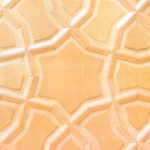The cane and bamboo craft exists in almost all the villages in the interior of Sikkim and the skilled artisans here offer a distinguished range of products.
Being one of the fastest growing plants and found in abundance all over the state, Bamboo is deeply embedded in several traditions of Sikkim and remains a decades old craft. Cane, grown in a limited area, is sourced from Siliguri, West Bengal and other regions in the North East. Although several areas in the North East dye the cane & bamboo, in Sikkim, painted cane & bamboo is more popular.
Known to exist in varied forms and sizes, the usage of cane & bamboo includes constructing some of most essential and commonly used products with minimal tools combined and interlaced with grass. The dual property of tensile strength and durability of bamboo also makes it an apt raw material for constructing homes, bridges, fences, furniture items – tables, chairs, moorahs to daily-use utility products such as basketry, containers, pen stands to name a few. Moreover, with innovative technology intervention, the use of bamboo & cane continues to be multi-fold. Dolls & toys, umbrellas, musical instruments, loom frames, figurines are some of the other products made with cane & bamboo in Sikkim.
It is interesting to note that specific types of cane & bamboo are used for particular objects – muli, a type of bamboo is used specifically for making umbrella handles. Pencil cane, on the other hand, is considered best for designing and binding. Moreover, it is also said that each district has their own distinct style of making basketry using this eco-friendly natural fiber.
Several cutting tools, locally known as Dao, khukri as well as heat treatment are used to modify cane & bamboo to achieve the desired length, thickness, shape and smoothness. The artisans make the tools themselves or are sourced from Gangtok.



